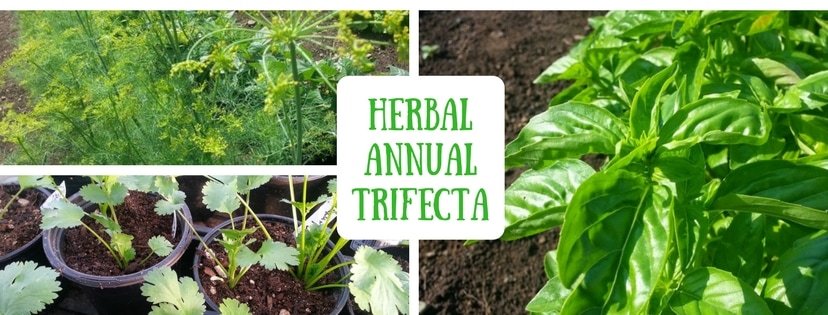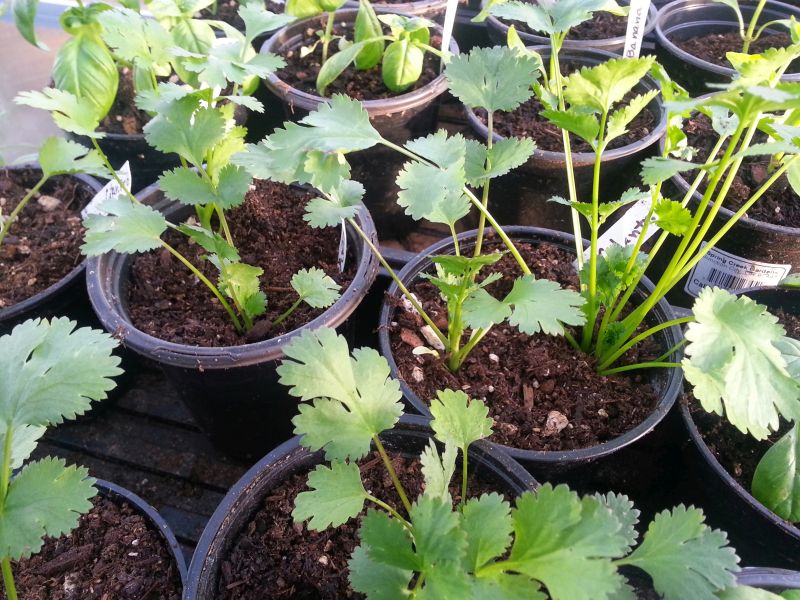
Here in the PNW, basil, dill, and cilantro are three herbs that we frequently receive questions about at classes or when we are at events, in the spring and early summer. These three herbs seem to cause angst for some herb lovers. Often people can get one or two to grow easily, but the third seems to cause no end of problems and proves somewhat elusive.
As spring plant sales start cropping up and these three herbs become available as starts, or you see seeds in local stores, here are a trio of tips for growing and maintaining these tricky triplets during the summer.
1. Sow seeds in late spring, then successional seed planting as needed. Late spring really means late May or early in June. Soil temperatures should be in the 50 degree range which means it will feel warm when you touch it.
Basil starts transplant fairly well and will go in a container well. Be sure the pots of basil that you are setting out have been acclimatized well before planting. Set them in a protected area for 4-7 days to help the plants adjust to being outdoors. Some growers may have already done this, so check with them. Basil likes direct sun so find a sunny spot for it. Here in the PNW we plant it usually in early June
Cilantro (the leaves of the coriander plant) does best when directly seeded in the ground. If you want the seeds (coriander) you should plant seeds in late April or May (of a typical PNW year). In order to get the seeds to ripen the plant will need a long growing season. The feathery foliage that looks somewhat like parsley is cilantro and can be planted later in the spring. It likes the sun, too and could easily grow next to basil.
Dill doesn’t consistently transplant well, so direct sow the seeds where you want them. Dill should be in a sunny area, too. If you leave some seeds on the plant, they will fall to the ground and you’ll have dill again the next year. We usually wait for it to get a bit warmer before we plant dill - very similar to basil, maybe a week or two earlier at most.
So we usually seed cilantro first, followed by dill, and then finally basil.

